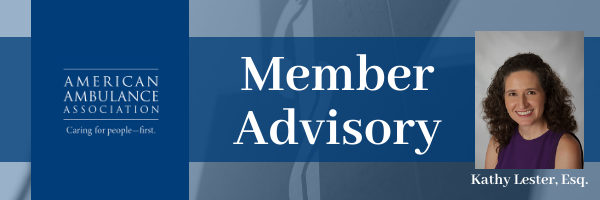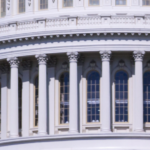FAQs – HHS CARES Act Provider Relief Funding
Frequently Asked Questions (FAQs) related to HHS CARES Act Provider Relief Funding
By Brian S. Werfel, Esq.
In March 27, 2020, President Trump signed into law the Coronavirus Aid, Relief, and Economic Security Act (CARES Act). As part of that Act, Congress allocated $100 billion to the creation of a “CARES Act Provider Relief Fund,” which will be used to support hospitals and other healthcare providers on the front lines of the nation’s coronavirus response. These funds will be used to fund healthcare-related expenses or to offset lost revenue attributable to COVID-10. These funds will also be used to ensure that uninsured Americans have access to testing a treatment for COVID-19. Collectively, this funding is referred to as the “CARES Act Provider Relief Fund.”
On April 9, 2020, the Department of Health and Human Services (HHS) began the disbursement of the first $30 billion of this provider relief funding. This disbursement was made to all healthcare providers and suppliers that were enrolled in the Medicare Program, and who received Medicare Fee-for-Service reimbursements during Calendar Year 2019. For most ambulance providers and suppliers, these relief funds were automatically deposited into their bank accounts.
In this Frequently Asked Question (FAQ), the AAA will address some of the more common questions that have arisen with respect to the Cares Act Provider Relief Funds.
Question #1: My organization received relief funds through an ACH Transfer. Is there anything our organization needs to do?
Answer #1: Yes. Within thirty (30) days of receiving the payment, you must sign an attestation confirming your receipt of the provider relief funds. As part of that attestation, you must also agree to accept certain Terms and Conditions. The attestation can be signed electronically by clicking here.
Question #2: Am I required to accept these funds? What happens if I am not willing to accept the Terms and Conditions imposed on the receipt of these funds?
Answer #2: You are not obligated to accept the provider relief funds. The purpose of these funds was to provide healthcare providers and suppliers with an immediate cash infusion in order to assist them in paying for COVID-related expenses and/or to offset lost revenues attributable to the COVID-19 pandemic.
If you are not willing to abide by the Terms and Conditions associated with these funds, you must contact HHS within thirty (30) days of receipt of payment, and then return the full amount of the funds to HHS as instructed. The CARES Act Provider Relief Fund Payment Attestation Portal provides instructions on the steps involved in rejecting the funds. Please note that your failure to contact HHS within 30 days to arrange for the return of these funds will be deemed to be an acceptance of the Terms and Conditions.
Question #3: Our organization has elected to retain the provider relief funds. Are there any major restrictions on how we can use these funds?
Answer #3: Yes. In the Terms and Conditions, HHS has indicated that you must certify that the funds will only be used to prevent, prepare for, and respond to coronavirus. You are also required to certify that the funding will only be used for health-care related expenses and/or to offset lost revenues that are attributable to coronavirus.
You are specifically required to certify that you will not use the relief funding to reimburse expenses or losses that have been reimbursed from other sources or that other sources are obligated to reimburse.
While the language in the Terms and Conditions are somewhat ambiguous, the AAA interprets this to mean that you must certify that your organization’s operations have been impacted, in some way, by the national response to the coronavirus. The AAA further interprets this language as requiring that, on net, the coronavirus pandemic has had an adverse impact on either your operations (in terms of added costs) or your revenues (in terms of decreased revenues). At the present time, the AAA believes that most, if not all, of our members that are currently providing services in response to the coronavirus pandemic will meet this standard.
Note: one situation where a provider may not be eligible for provider relief funding would be a situation where the provider ceased operations prior to January 31, 2020. For example, a provider that ceased operations on December 31, 2019. Because the ambulance provider was paid for Medicare FFS services furnished in 2019, it may receive provider relief funding. However, if the organization’s operations ceased prior to the onset of the current state of emergency, it would not be able to meet the requirement that it provided diagnoses, testing, or care for individuals with possible or actual cases of COVID-19. In this situation, the ambulance provider would likely be obligated to reject the provider relief funding.
Question #4: Are there any other restrictions on our use of provider relief funding?
Answer #4: Yes. In addition to the restrictions discussed in Answer #3 above, you are also restricted from using the provider relief funding for any of the following purposes:
- The provider relief funds may not be used to pay the salary of an individual at a rate in excess of Executive Level II (approximately $189,600);
- The provider relief funds may not be used, in whole or in part, to advocate or promote gun control;
- The provider relief funds may not be used, in whole or in part, for lobbying activities;
- The provider relief funds may not be used to fund abortions (subject to certain exceptions);
- The provider relief funds may not be used for embryo research;
- The provider relief funds may not be used for the promotion of the legalization of controlled substances;
- The provider relief funds may not be used to maintain or establish a computer network, unless such network blocks the viewing, downloading, and exchanging of pornography;
- The provider relief funds may not be provided to the Association of Community Organizations for Reform Now (ACORN), or any of its affiliates, subsidiaries, allied organizations, or successors;
- The provider relief funds may not be used to purchase sterile needles or syringes for hypodermic injections of illegal drugs.
Question #5: How will HHS verify that the provider relief funding is being used for an appropriate purpose?
Answer #5: HHS will require all recipients of provider relief funding to submit reports “as the Secretary determines are needed to ensure compliance with the conditions imposed.” HHS indicated that it will provide future program instructions to recipients that specifies the form and content of these reports. Recipients will also be required to maintain appropriate records and cost documentation to substantiate how provider relief funds were spent, and to provide copies of such records to HHS upon request.
In addition, ambulance providers and suppliers that receive, in the aggregate, more than $150,000 in funds under the CARES Act, the Coronavirus Preparedness and Response Supplemental Appropriations Act, the Families First Coronavirus Response Act, and any other legislation that makes appropriations for coronavirus response and related activities will be required to submit a report within 10 days of the end of each calendar quarter. These reports must specify: (1) the total amount of funds received from HHS under each of these pieces of legislation, (2) the amount of funds received that was spent or obligated to be spend, and (3) a detailed list of all projects or activities for which large covered funds were expended or obligated.
Question #6: We understand that one of the conditions associated with the provider relief funding is that we agree not to balance bill patients. Is our understanding correct?
Answer #6: The Terms and Conditions do contain provisions that would likely place restrictions on your ability to balance-bill patients.
In order to understand these restrictions, it is probably helpful to understand the underlying purpose of the restriction. The actual language from the Terms and Conditions reads as follows:
“The Secretary has concluded that the COVID-19 public health emergency has caused many healthcare providers to have capacity constraints. As a result, patients that would ordinarily be able to choose to receive all care from in-network healthcare providers may no longer be able to receive such care in-network. Accordingly, for all care for a presumptive or actual case of COVID-19, Recipient certifies that it will not seek to collect from the patient out-of-pocket expenses in an amount greater than what the patient would have otherwise been required to pay if the care had been provided by an in-network Recipient.”
As the language makes clear, HHS was not focused primarily on the practice of balance-billing. Rather, HHS’ concern was that many healthcare providers would have capacity restraints. As a result, patients may be restricted in their ability to receive care from their normal providers (who are presumably in-network with the patient’s insurer). HHS’ intent was to ensure that the patient does not suffer any adverse financial consequences as a result of seeking care for presumptive or actual cases of COVID-19. It accomplishes this goal by requiring the recipient of provider relief funds to agree not to collect from the patient out-of-pocket expenses that are greater than what the patient would have incurred has the care been provided by an in-network provider.
This is being interpreted as a ban on “balance-billing” because most commercial insurers require their contracted providers to accept the plan’s allowed amount as payment-in-full, i.e., to agree to only bill the patient for applicable copayments and deductibles.
Ambulance providers and suppliers should keep in mind that this will not impact the payment of claims from: (1) Medicare, Medicaid or other state and federal health care programs that already require you to accept the program’s allowed amount as payment-in-full, (2) commercial insurers with which the organization currently contracts, and (3) the uninsured. In other words, this requirement only impacts payments from commercial insurers with which the organization currently does not contract.
At this point in time, it is expected that non-contracted commercial insurers will process your claim and make a determination as to whether the claim is related to the treatment and care of a presumptive or actual case of COVID-19. If the plan determines that the services you furnished were COVID-related, they will likely pay you the in-network rate they have established with contracted providers in your services area. The plan will likely then issue a remittance notice that indicates that you may not bill the patient for any balance over the insurer’s payment. Note: many of the larger commercial insurers have indicated that they will waive the copayments and deductibles due from patients for COVID-related claims. If the plan waives the copayment and deductibles, they will pay these amounts to you as part of their payment of the claim. If they do not waive the copayment and deductible, you will be permitted to seek to collect these amounts from the patient. If the plan determines that the services you furnished were not COVID-related, they will continue to pay your claims using their normal claims processing, and you would be permitted to balance bill the patient to the extent otherwise permitted under state and local law.
There is still a good deal of confusion related to this aspect of the CARES Act Provider Relief Funding. It is expected that HHS will be issuing further clarification in the days to come. The AAA will update this FAQ to reflect any updated guidance from HHS.



















